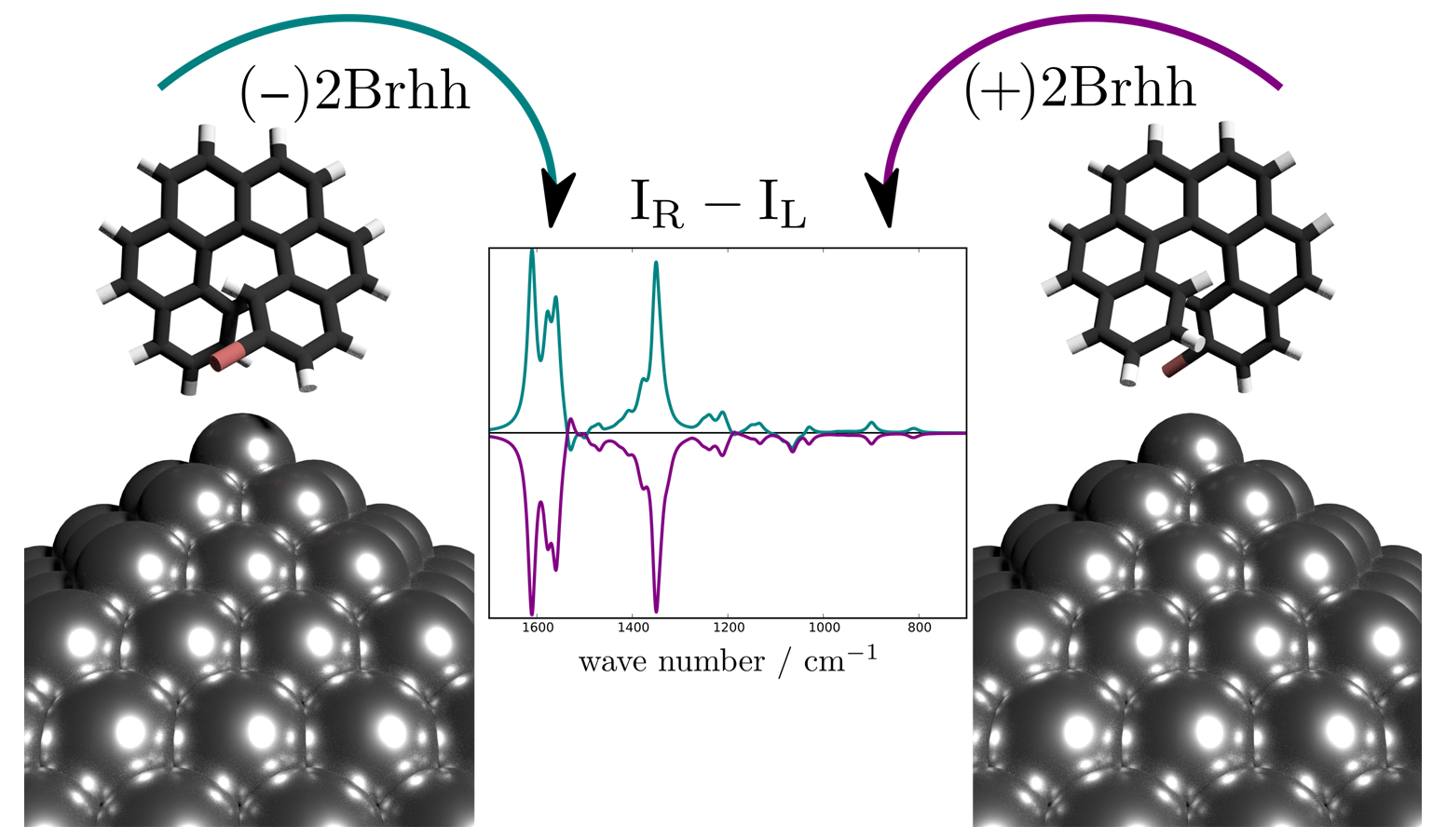Surface-enhanced Raman optical activity
Raman optical activity has proven to be a powerful tool for probing the geometry of small organic and biomolecules, but the fledgling technique of surface-enhanced Raman optical activity (SEROA) remains an experimental challenge. SEROA of small molecules have been simulated through an implementation of the velocity gauge response tenors into the discrete interaction model / quantum mechanics (DIM/QM) model in ADF, where the nanoparticle is simulated as a collection of interacting atomic polarizabilities. The results gave insights into how the nature of the local electric field and gradient strengths, plasmon width, and molecular orientation all affect the SEROA signals.

Simulated SEROA of the enantiomers of 2-bromo-hexahelicene (2Brhh) on the vertex of a Ag21127 cluster.
The DIM/QM method is developed by Lasse Jensen and his group, see also his web presentation.
D.V. Chulhai and L. Jensen, Simulating Surface-Enhanced Raman Optical Activity Using Atomistic Electrodynamics-Quantum Mechanical Models, J. Phys. Chem. A, 118, 9069 (2014)
Key conceptsADF nanoscience plasmon spectroscopy TDDFT